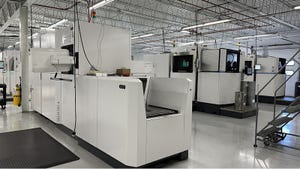March 8, 2011

At the most recent ODVA conference, where industrialnetwork topics are the order of the day (ODVA is the organization that supports network technologies built on the CommonIndustrial Protocol, such as DeviceNet, EtherNet/IP, CompoNet andControlNet), one of the hot topics being discussed was wireless. One session inparticular, presented by Paul Brooks of Rockwell Automation and Paul Didier ofCisco, focused on the current real world utility of wireless and the benefitsof moving to 802.11n in an industrial environment.
Though wireless network use is still very much in itsinfancy for industrial use, Brooks and Didier are confident that WiFi willfollow Ethernet into greater use in automation and control systems. However, theyexpect that wide use of WiFi in the industrial arena is still several years offlargely due to the level of existing investments in wired networks coupled withthe fact that wireless technology capabilities tend to lag a bit behind wired.
In addition, Brooks noted that, from performance, energy andflexibility aspects, WiFi is not as capable as specific industrial wirelessprotocols such as WirelessHART or ISA 100. To illustrate his point, Brooks pointed out that, in control and safety applications, latency andfidelity remain the biggest challenge for wireless devices. Therefore,synchronization and motion applications tend to operate better when connected via wirednetworks.
But with an array of business drivers pushing greater use ofwireless into the industrial area, such as the elimination of wires,portability/mobility of devices, asset tracking, remote monitoring and videosurveillance, large market opportunities exist in industry for wireless devices.Therefore, device designers should concentrate on applications involving movingoperators, moving machinery and applications where running wires is difficultand costly, suggested Didier.
"The key for wireless device designers is to ensure that theuser experience is the same with a wireless device as it is with wired device,"Didier said.
A large portion of their presentation focused on thebenefits of updating to the 802.11n standard. Advantages for device designers inherentin the 802.11n include:
MIMO (multiple inputs, multiple outputs), which ensuressignals are received in-phase and increases receiver sensitivity;
Maximum Ratio Combining - multiple signals aresent and combined at the receiver, thereby increasing fidelity;
Packet aggregation - multiple packets arecombined into one data packet, providing a big boost for network data managementin time-critical industrial automation applications;and
Backward compatibility with 2.4 GHz and 5 GHz aswell as the 802.11 a, b and g standards. Didier added that, for optimalresults, time-critical applications should run on 5 GHz with all else on 2.4 GHzto increase fidelity.
About the Author(s)
You May Also Like





